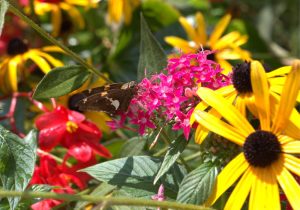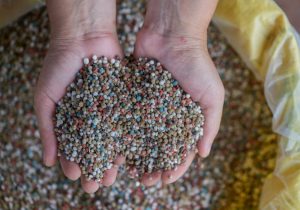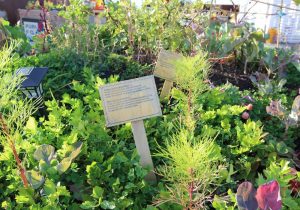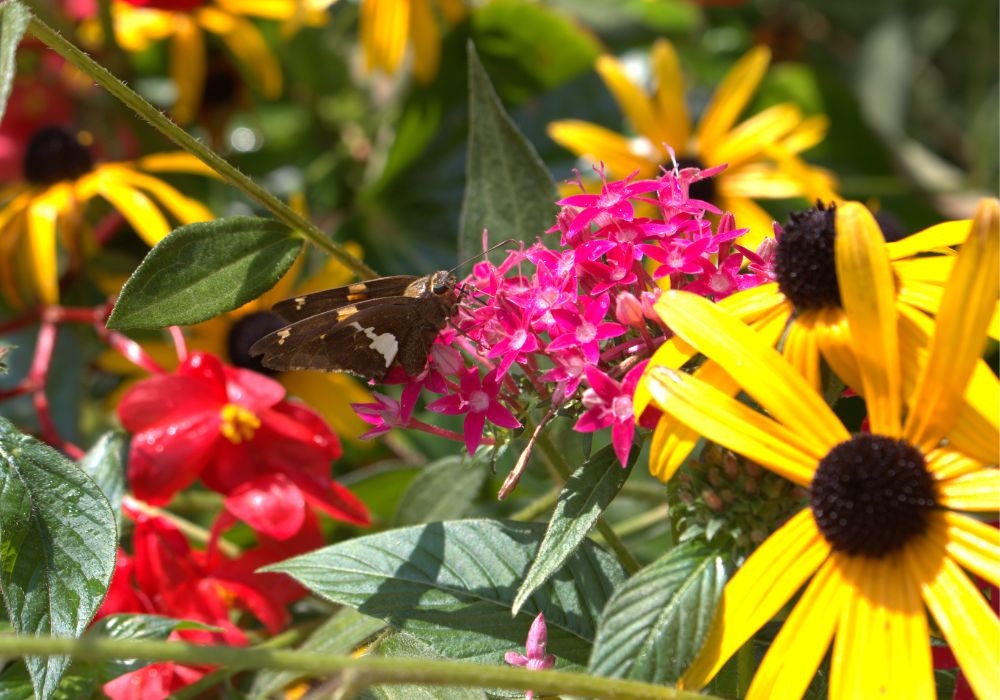
Gardeners wishing to provide height, structure, and elegance to their garden designs will find the ideal solution in tall perennial flowers. These long-lived blossoms provide low maintenance and beauty, returning year after year. Tall perennials can be a focal point, cover shorter plants, or provide a rainbow of colors to your scene.
This post will discuss ten amazing tall perennial flowers that will create a magnificent environment for your home.
Understanding Tall Perennial Flowers
Contents
Tall perennial flowers are an essential component of most garden designs. They provide structure, height, and long-lasting beauty to most outdoor spaces. In addition, perennials are low-maintenance for gardeners since they return season after season, unlike annuals that must be replanted yearly. Usually growing several feet tall, these flowers are well-known for their striking heights and for providing natural focal points or backdrops for a landscape.
Tall perennials appeal generally because of their adaptability and robustness. Their vertical interest breaks up the monotony of lower-growing plants and directs the eye upward, so augmenting any garden. They also foster layering, which gives garden beds dimension and depth. Many tall perennials are also prized for their capacity to draw pollinators including bees, butterflies, and hummingbirds, so enhancing their beauty and value to the surroundings.
Tall perennials come in a variety of colors, shapes, and textures, allowing for endless combinations in garden designs. Whether you prefer the bold, dramatic blooms of hollyhocks or the airy, delicate presence of Russian sage, these flowers offer something for every style. Their hardy nature means they can thrive in various climates, provided they’re planted in the right conditions. Tall perennial flowers are a sustainable, aesthetically pleasing choice for gardeners seeking to create a dynamic, multi-dimensional space.
Top 10 Tall Perennial Flowers For Your Garden
Tall perennial flowers bring a unique charm to gardens, adding height, color, and elegance. Whether you’re aiming for a cottage-style garden or a more modern, structured landscape, these flowers can enhance any design. Here are 10 stunning tall perennials that will make your garden stand out, starting with three timeless favorites.
Delphinium
Rising spires of vivid blue, purple, or white flowers define delphiniums. Often used as a backdrop for shorter plants, they make a dramatic statement in the garden. Delphiniums need well-drained soil to flourish and grow best in full sun. Regular maintenance lets them produce tall, show-stopping blooms year after year.
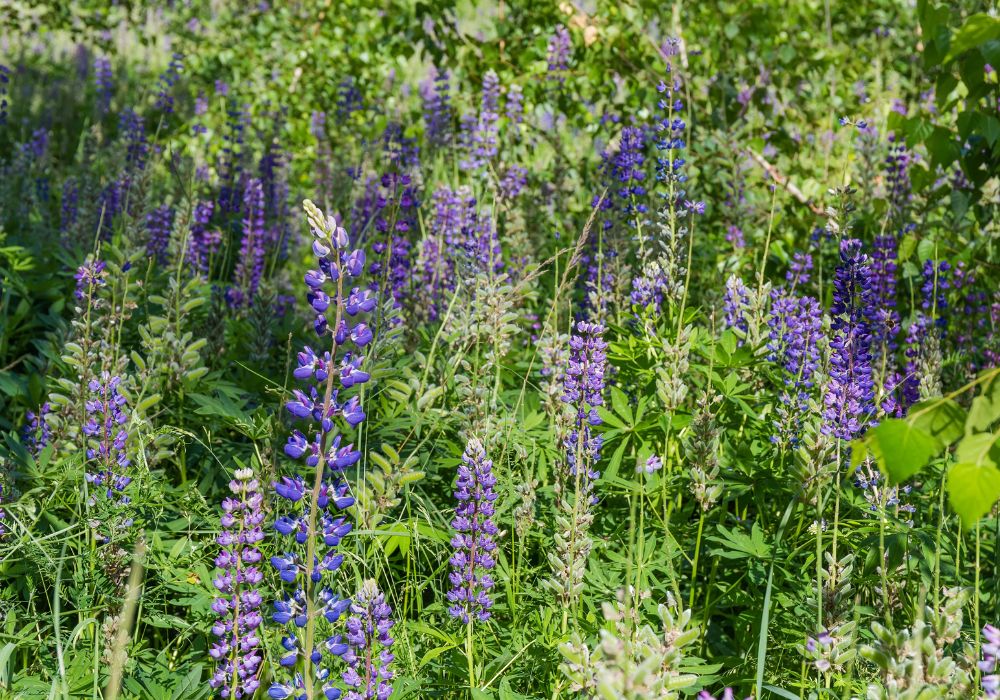
Hollyhock
With their tall, strong stems covered in pink, red, yellow, and white blooms, hollyhocks are a traditional choice for cottage gardens. Perfect for creating vertical interest, these little blossoms bring traditional beauty and can reach up to 8 feet tall. Offering a breathtaking summer display of color, hollyhocks like rich, fertile soil and full sun.
Joe-Pye Weed
Although Joe-Pye Weed has a simple name, its remarkable height and clusters of pinkish-purple blossoms set it apart in a garden. This native wildflower is lovely and attracts bees and butterflies, among other pollinators. For adding height and drawing inbound wildlife to your garden, Joe-Pye Weed grows in moist, well-drained soil and can reach heights of up to six feet.
Russian Sage
Russian Sage are drought-tolerant, tall perennial flowers with airy lavender-blue blossoms and silver-gray foliage. It gives every garden a delicate yet arresting component. Perfect for low-maintenance settings, this plant, which grows to five feet tall, thrives in full sun and poor, well-drained soils. Its long-lasting blossoms draw pollinators, and the tall perennial flowers offer a graceful, wispy texture that accentuates other garden plants rather nicely.

Coneflower (Echinacea)
Rising up to 4 feet in height, coneflower, also known as Echinacea, are strong and adaptable tall perennial flowers. Garden beds will get a striking splash of color from its daisy-like blooms in white, pink, and purple tones. It is not only a visual feast but also a great choice for drawing bees and butterflies; coneflower is well-known for its resilience under full sun and drought conditions. From mid-summer through early fall, the tall perennial flowers of Echinacea offer a dependable flash of color.
Cardinal Flower (Lobelia cardinalis)
Rising to a height of four feet, Cardinal Flowers are incredibly tall perennial flowers with brilliant red blooms. Hummingbirds particularly find its vivid hue and unusual tubular blossoms quite appealing. This plant is ideal for wet garden parts since it can withstand partial shade and grows best in moist soil. Among tall perennial flowers, Cardinal Flower is unique in height and brilliant color, adding vitality to any garden environment.
Verbena bonariensis
Verbena bonariensis is an elegant tall perennial flower known for its slender stems and clusters of tiny lavender flowers. Reaching heights of up to 6 feet, this plant adds a delicate, airy feel to any garden. Its blooms sit atop thin, branching stems, blending seamlessly with other plants. Ideal for attracting butterflies, Verbena bonariensis thrives in full sun and well-drained soil. The tall perennial flowers bring texture and movement to garden beds, making them a favorite for adding height without overwhelming other plants.
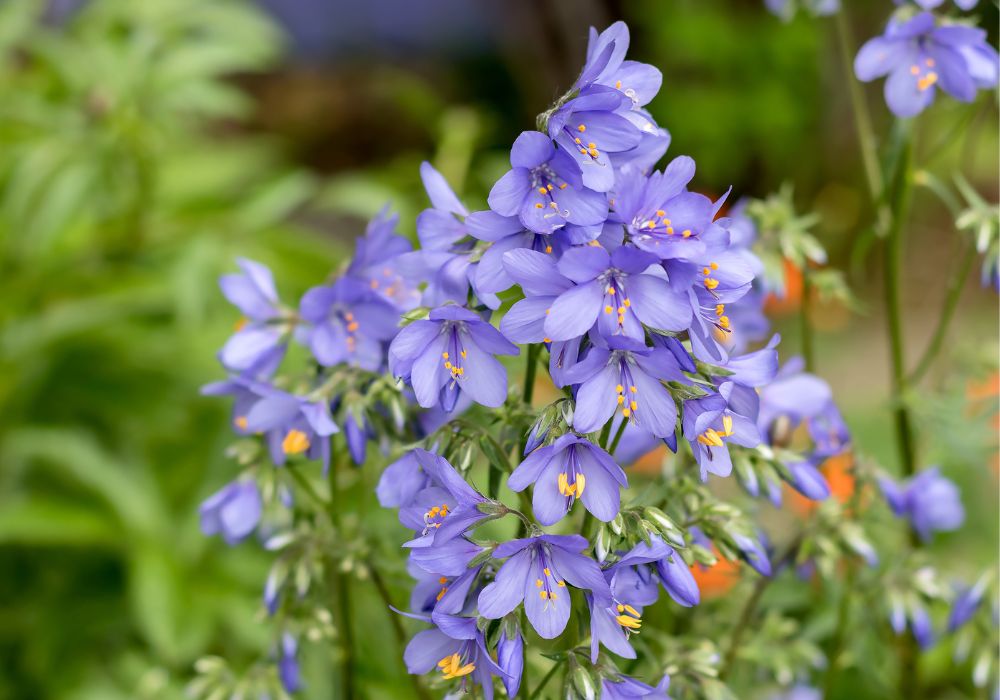
Bee Balm (Monarda)
Bee Balm is a showy tall perennial flower with bright, spiky blooms that come in shades of red, pink, purple, and white. These flowers can grow up to 4 feet tall, creating a dramatic effect in garden beds. Known for attracting pollinators like bees, butterflies, and hummingbirds, Bee Balm thrives in full sun or partial shade and moist soil. The tall perennial flowers are also fragrant, making them a delightful addition to visual and sensory garden experiences. They stand out in pollinator gardens and add vibrant color throughout the summer.
Black-Eyed Susan (Rudbeckia)
Black-Eyed Susan is a beloved tall perennial flower with bold yellow petals and dark brown centers. Growing up to 3 feet tall, these flowers are known for their cheerful, sun-loving nature and long blooming period. They thrive in full sun and can tolerate drought, making them a hardy choice for many gardens. The tall perennial flowers of Black-Eyed Susan not only brighten up landscapes but also attract beneficial pollinators, adding both beauty and function to garden designs.
Foxglove (Digitalis)
Foxglove is a stunning tall perennial flower that can grow up to 6 feet tall, with tubular flowers arranged in tall spires. Often seen in shades of pastel pink, purple, and white, Foxglove adds a cottage garden feel to any space. These flowers prefer partial shade and moist soil, making them ideal for shaded borders or woodland gardens. The tall perennial flowers of Foxglove create a graceful vertical accent, and their unique shape makes them an eye-catching addition to any landscape.
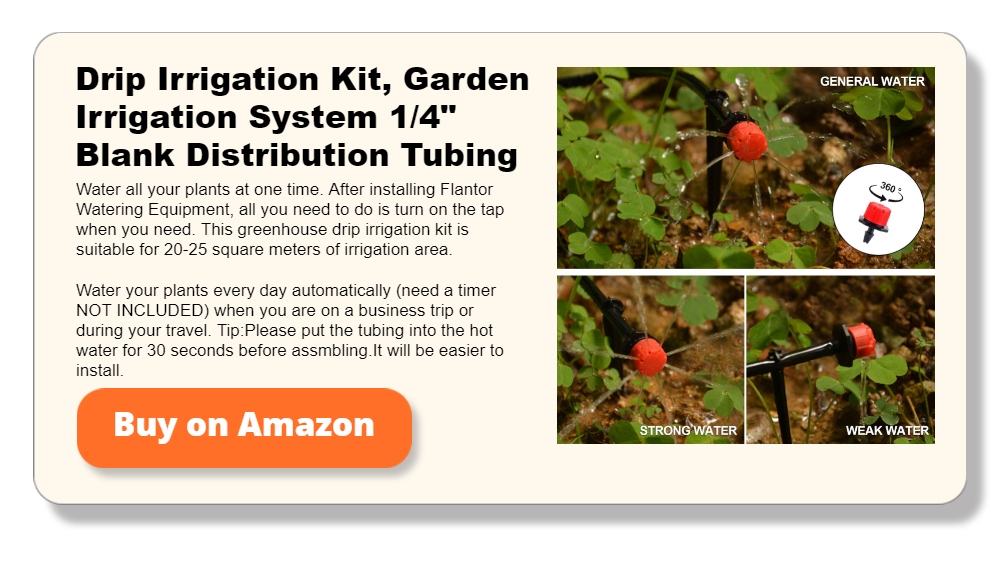
How to Care for Tall Perennial Flowers
Caring for tall perennial flowers ensures their long-term health and vibrant blooms. Although these plants tend to be hardy and low-maintenance, little attention can significantly affect their growth and longevity. Following some basic care guidelines, you can enjoy their beauty year after year. Below are important tips for watering, pruning, fertilizing, and more.
Watering and Moisture Needs
Tall perennial flowers typically need consistent moisture, especially when they’re first planted. The goal is to keep the soil evenly moist but not waterlogged. Watering deeply once or twice weekly is generally more effective than frequent light watering. This encourages the plants to develop strong, deep root systems.
During the hotter months, you may need to water more frequently, especially for perennials like Joe-Pye Weed and Bee Balm, which thrive in moist soil. However, once the plants are established, you can reduce the watering for drought-tolerant varieties like Russian Sage.
Fertilizing for Healthy Growth
Fertilizing helps to ensure that your tall perennial flowers receive the nutrients they need to grow tall and strong. Use a balanced, slow-release fertilizer in the early spring to give the plants a good start. Fertilizers rich in nitrogen can help promote lush foliage, while phosphorus encourages strong root growth and vibrant blooms.
If your soil is nutrient-rich, you may not need much supplemental feeding. For nutrient-poor soils, applying compost or organic matter in the fall or early spring can work wonders for your perennials. Always avoid over-fertilizing, as this can lead to excessive leaf growth and fewer flowers.
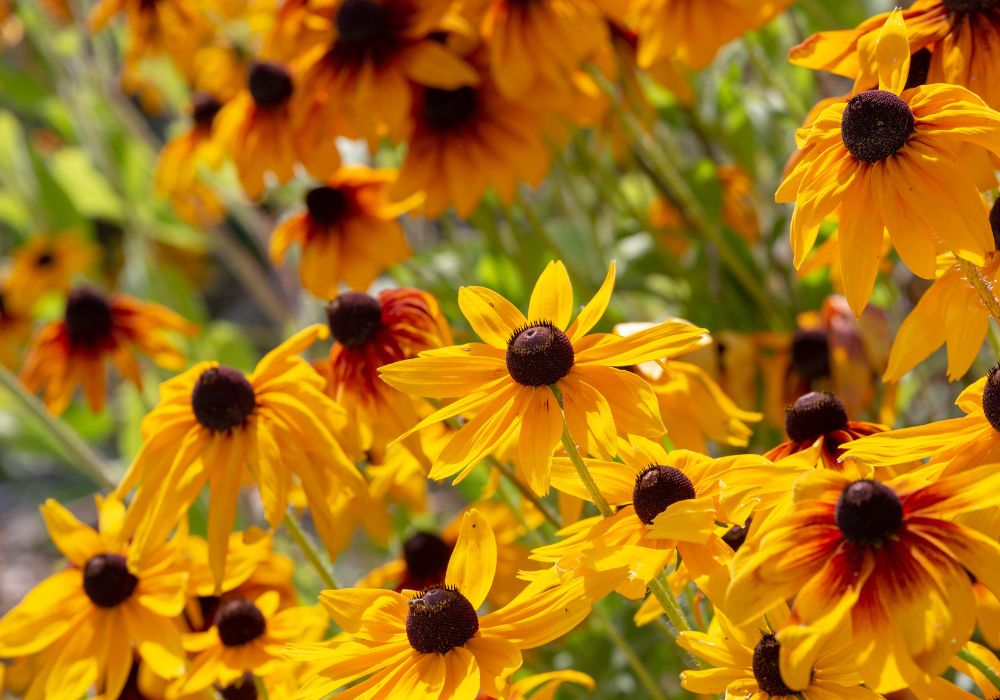
Pruning and Deadheading
Pruning is crucial for keeping tall perennial flowers healthy and looking their best. Remove any dead or damaged stems in early spring to promote fresh growth. Throughout the blooming season, deadhead spent flowers to encourage continued blooming. Deadheading also keeps the plant tidy and prevents it from focusing its energy on producing seeds.
For certain perennials, like Delphinium, cutting back the entire stem after the first round of blooms can stimulate a second wave of flowers later in the season. Some tall perennials, such as Foxglove, may not require extensive pruning, but trimming them lightly after flowering can improve their overall appearance.
Supporting Tall Plants
Tall perennial flowers often need support to prevent their stems from bending or breaking under the weight of blooms, especially after heavy rain. Use stakes, cages, or trellises to support plants like Hollyhock and Delphinium, which can grow up to 8 feet tall.
Be sure to install supports early in the growing season so the plants can grow into them naturally. This minimizes the risk of damaging the roots when inserting stakes later. Natural materials like bamboo stakes or metal supports can seamlessly blend into the garden design.
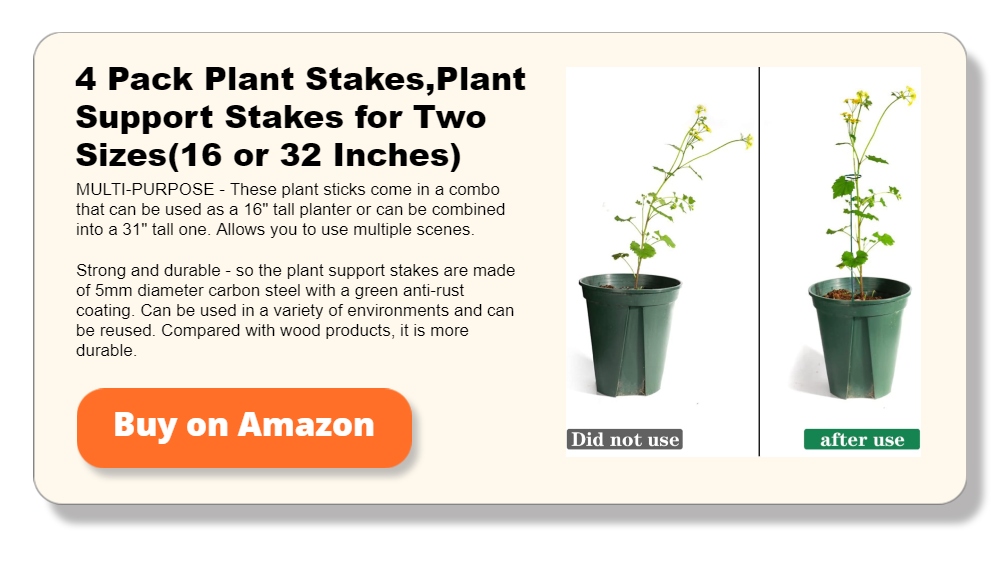
Pest and Disease Management
Many tall perennial blooms are robust, but they can still be vulnerable to pests and diseases. Common problems are aphids, slugs, and powdery mildew. Space the plants correctly and clear any dropped trash from the base to guarantee good air circulation around them and help avoid these issues.
Should pests show up, consider substituting organic insecticidal soap or neem oil for chemical pesticides. Maintaining dry leaves during watering can help lower the risk of infection with fungal diseases, including powdery mildews. Furthermore, selecting tall perennial flowers with disease-resistant traits can greatly affect long-term maintenance.
Preparing for Winter
Although most tall perennial flowers are hardy enough to survive winter, in colder climates, they could require some extra protection. Following the first frost, cut back dead stems and leaves to roughly two to three inches above the ground. Mulching the ground around the base of the plants will help insulate the roots and guard them from too high temperatures.
Certain tall perennials, such as coneflower, can be left standing all winter to feed birds and add visual appeal to the scene. To promote fresh development in early spring, pull off the mulch and any dead stems.
Maintaining tall perennial blooms doesn’t have to be difficult. If you water, fertilize, prune, and prepare for winter, your perennials will stay robust and beautiful for many years. Additionally, providing them with the correct protection from pests will help them with their health and longevity. Following these rules will help you enjoy breathtaking, soaring blossoms season after season.

Benefits of Tall Perennial Flowers in Pollinator Gardens
Tall perennial flowers not only add beauty and structure to your garden but also play a critical role in supporting pollinators. By including tall perennials in your pollinator garden, you can provide food and shelter for bees, butterflies, hummingbirds, and other beneficial insects. Here’s a look at why these towering blooms are so valuable in pollinator-friendly landscapes.
Attracting a Diverse Range of Pollinators
Tall perennial flowers come in various colors, shapes, and sizes, which attract a wide range of pollinators. Plants like Coneflowers and Bee Balm are especially popular with bees, while the vibrant red blooms of Cardinal Flower draw in hummingbirds. Joe-Pye Weed and Verbena bonariensis, with their clusters of small flowers, are favorites of butterflies.
Because these flowers bloom at varying times throughout the growing season, they provide a continuous source of nectar and pollen. This variety ensures that pollinators have access to food from early spring through late fall, which is essential for supporting their lifecycle and population growth.
Providing Shelter and Habitat
Tall perennial flowers do more than just attract pollinators—they also offer essential shelter and habitat. The height and density of plants like Hollyhocks and Russian Sage create safe spaces where pollinators can rest, nest, and even hide from predators. These flowers often grow in clusters, providing cover that helps protect small insects and birds from the elements.
Additionally, many tall perennials grow densely enough to support nesting habitats. Tall plants with hollow stems, like Foxglove, can become nesting sites for solitary bees, contributing to the overall health and diversity of the pollinator community.
Creating Layers for Better Foraging
One of the benefits of tall perennial flowers in pollinator gardens is the layering effect they create. When you plant tall perennials alongside medium and short plants, it mimics a more natural, multi-layered habitat, allowing pollinators to forage at different heights. This layering makes your garden more accessible to various species, from ground-dwelling bees to birds and butterflies that prefer taller flowers.
By offering food sources at different heights, tall perennials contribute to a more dynamic and diverse pollinator garden. This ensures that all kinds of pollinators, regardless of their size or preferred foraging habits, have what they need.
Long Blooming Periods for Sustained Support
Many tall perennial flowers, including Joe-Pye Weed and Coneflower, have long blooming times, so offering a consistent supply of nectar all through the season. This long bloom season guarantees food for pollinators even when other garden flowers have closed. Tall perennials in a pollinator garden help to sustain pollinators longer, so supporting their populations during vital times like late summer or early fall.
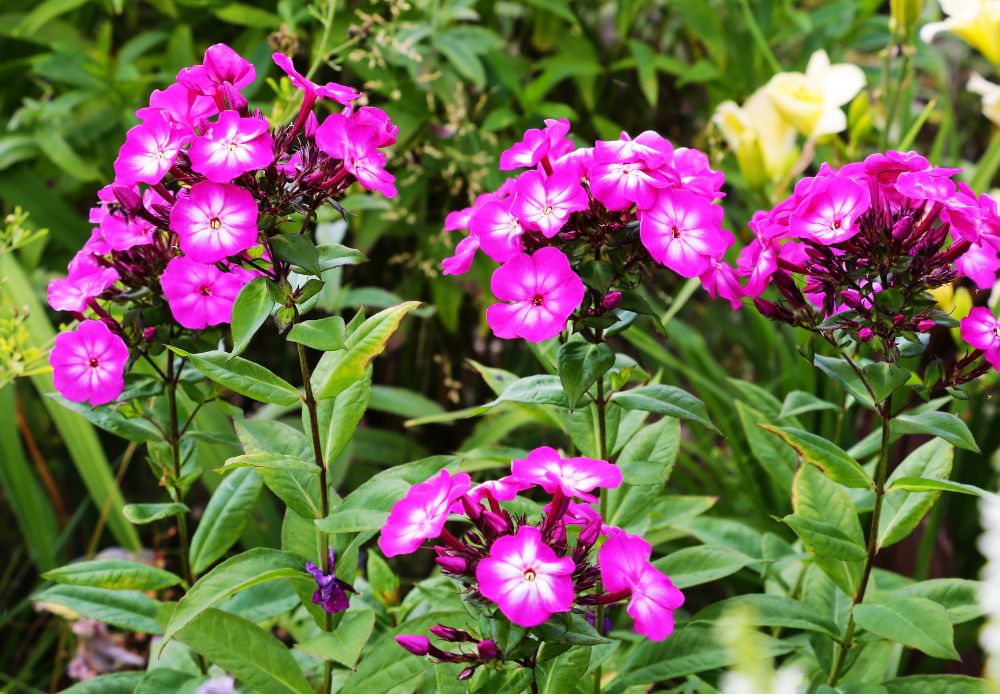
Low Maintenance with High Environmental Impact
A pollinator garden would find tall perennial flowers to be an easy and environmentally friendly choice since they are often low maintenance. Once established, many varieties are drought-tolerant and require little maintenance, which lets you keep a pollinator-friendly scene free from regular watering or chemical treatments.
Choosing perennials, which return year after year, helps you also cut the need for yearly replanting, so saving time and money. These tough flowers provide long-term advantages for the pollinators that visit as well as for the environment, so supporting sustainable garden design.
Including tall perennial blooms in your pollinator garden will have lots of advantages. These plants give a constant supply of nectar and pollen over the growing season, shelter and habitat, and draw a broad spectrum of pollinators. Environmentally conscious gardeners would find them perfect because of their low-maintenance nature and layered foraging environment creation ability.
Common Mistakes When Growing Tall Perennial Flowers
Tall perennial flowers can bring beauty and height to any garden, but they come with their own set of challenges. When growing these plants, gardeners often make a few common mistakes that can affect their health, growth, and overall appearance. Here are some of the most frequent errors and how to avoid them to keep your tall perennials thriving.
Over or Underwatering
Tall perennial flowers vary in their water needs, and many gardeners make the mistake of either overwatering or underwatering. Drought-tolerant plants like Russian Sage can suffer if watered too frequently, while moisture-loving plants like Bee Balm or Cardinal Flower can become stressed in dry soil.
Familiarize yourself with the water requirements of each type of tall perennial flower you’re growing. For drought-tolerant plants, ensure the soil has good drainage and avoid overwatering. For moisture-loving varieties, consider adding mulch to help retain moisture and water them more frequently during dry spells.
Neglecting Deadheading and Pruning
Tall perennial flowers often benefit from regular deadheading and pruning, but this is a step many gardeners overlook. Failing to remove spent blooms can result in the plant diverting energy to seed production instead of new growth and blooms. Additionally, neglecting pruning can lead to tall perennials becoming leggy and unkempt.
Make deadheading a part of your routine during the growing season. This simple task encourages more blooms and keeps your plants looking tidy. For plants like Delphinium, cutting back the stems after the first round of blooms can even trigger a second flowering later in the season.
Planting in the Wrong Location
Planting tall perennial flowers in unsuitable locations is another common mistake. Each plant has specific light and soil needs, and placing them in the wrong spot can lead to poor growth or even failure to thrive. For instance, sun-loving plants like Coneflower won’t do well in the shade, and moisture-loving plants will struggle in dry, sandy soils.
Before planting, ensure you understand each tall perennial flower’s sun, soil, and moisture needs. Plant sun-loving varieties in full sun and shade-tolerant ones in partial shade. Also, match the soil type to the plant’s needs to give it the best chance of success.
Conclusion
Growing tall perennial flowers successfully requires attention to details like spacing, support, watering, and planting location. By avoiding these common mistakes, you can help your perennials reach their full potential and enjoy their beauty season after season. With proper care, tall perennials will become the backbone of your garden, adding height, texture, and stunning color year after year.
Are you still looking to add more colors to your garden? Check out our gardening guide for wildflowers next!


